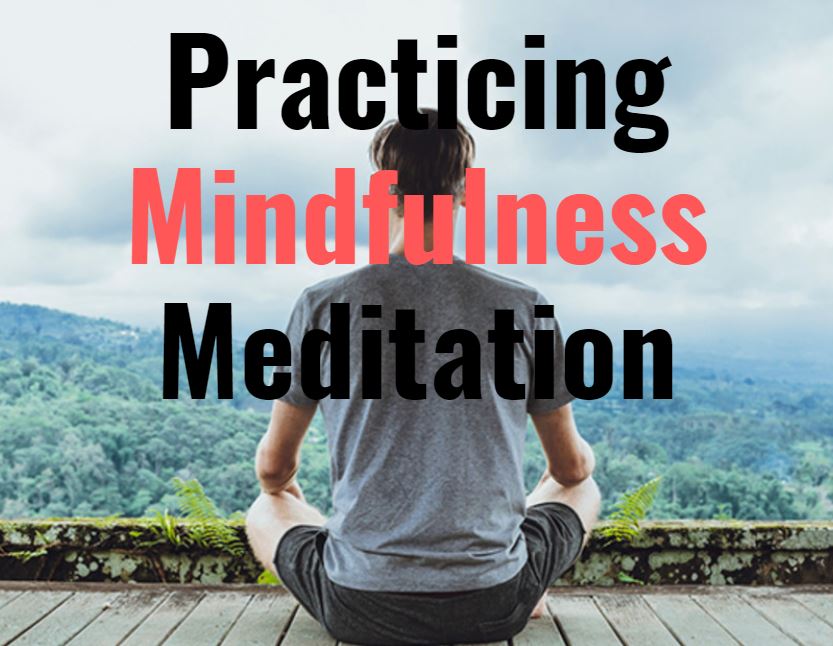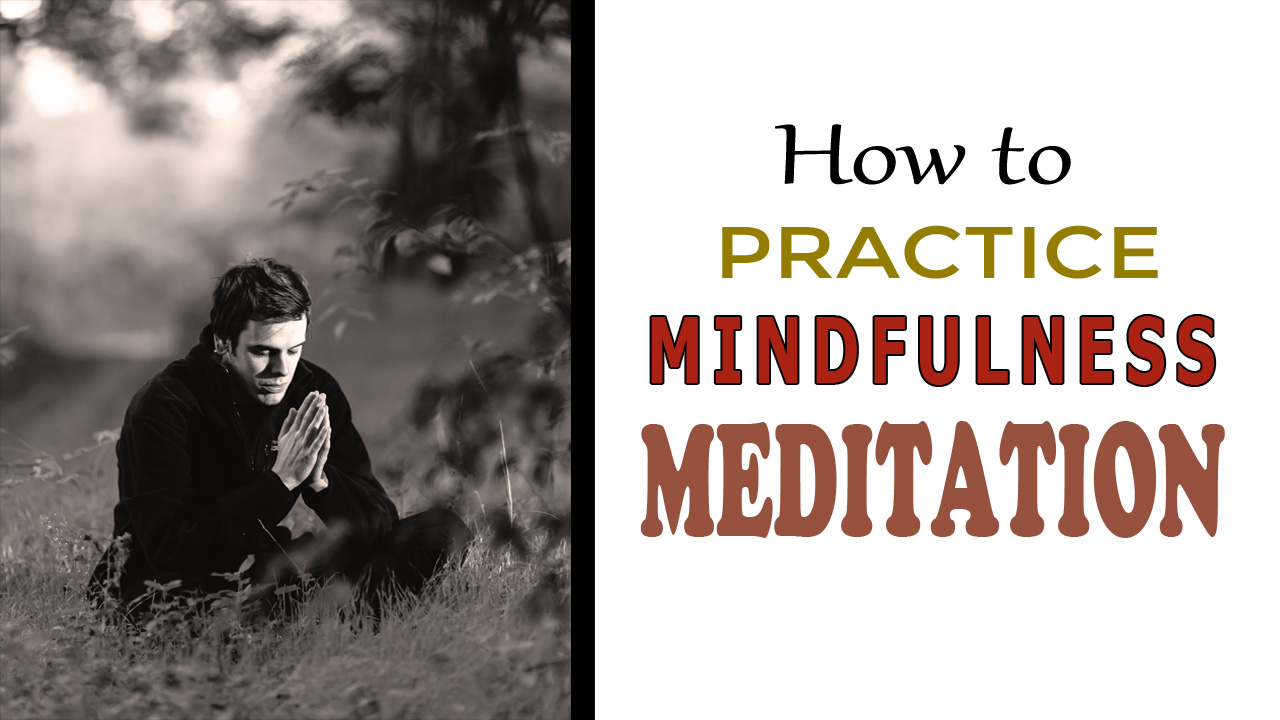Mindfulness is an ancient Buddhist practice, having an intense relevance with today. It is all about having an awakening mind. It helps us to bring harmony to life by knowing ourselves and being able to cultivate the fullness of every moment of our lives.
From the Buddhist point of view, the state of one’s consciousness is limited, meditation is a process of wake our consciousness fully so we can possibly have full access to the possibilities of making our lives better.
Mindfulness means being attentive in a particular way and the present moment without being judgmental. This attentiveness creates awareness, lucidity, and concurrence of the reality of the present moment.
“MEDITATION IS A PRIMARY TOOL THAT BRINGS ABOUT THE RADICAL TRANSFORMATION FROM REFLEXIVE SUFFERING TO PROFOUND WELL-BEING.”
Mindfulness Meditation
“Mindfulness meditation is a way of befriending ourselves and our experience” – John-Kabat Zinn
Characteristics of Mindfulness meditation

Following are the key elements of mindfulness meditation.
Non-Judgmental Observation
Mindfulness meditation enables one to observe things without being judgmental. The meditator just observes things as they are present, there is no criticism. The mind is free from the pressure as it keeps balanced interest about the things in their natural existence.
UnBiased Watchfulness
This practice of meditation involves impartiality. Mindfulness neither is besotted with good nor does it avoid the bad one. There is no attraction to the pleasant and repulsion from the unpleasant. Mindfulness is a feel of no favorites.
Bare Attention
A major quality of mindfulness meditation is that the meditation has awareness without being involved in the thoughts and concepts. Mindfulness is no thinking just looking and observing.
Present-Moment Awareness
The key factor of mindfulness is concentrating on what is happening “right here, right now”. Mindfulness is all about the present.
Non-Self Conceited
Mindfulness is a quality of being alert in a non-egotistic manner. The meditator sees all the occurrences without self-referencing.
Observation of Change
It is a process of observing things as they change in their natural manner. It is watching the changing moment by moment, continuously.
How to Practice Mindfulness Meditation

In the introspective psychotherapy training and Buddhist traditional ways, mindfulness is the process of recognizing natural wisdom through sitting meditation.
One of the original standardized programs for mindfulness meditation is the Mindfulness-Based Stress Reduction program. This program was developed by a Buddhist monk and scholar Jon Kabat-Zinn and focuses on the awareness and attention to the present.
This practice is idiosyncratic in the way that it educates us to be present without conditions or limits. This practice gives us an opportunity to become more present with ourselves, the way we are, as a result, we feel the feeling of being fully alive.
How to practice this type of meditation? Well, there are many basic techniques; the following tips would bring you in a better state to start mindfulness meditation.
1. Start from now
Practicing something is quite harder than just reading blogs and information about it. You are obsessed with the benefits, but you cannot enjoy them until you begin. Taking action is another thing altogether. The main step is to make a commitment to starting this practice; your journey should begin from today, right now.
2. Time Allocation
Time allocation varies for different techniques of meditation. As a rough calculation allocate 10-30 minutes for this practice as a beginner.
If, according to your schedule, you are unable to take some time out, try to think the other way. Eliminate your extra activities like watching TV, surfing the internet or viewing social media, to find a space between these activities. You will surely be able to take at least 10 minutes out to start mindfulness meditation.
3. Quiet Space
Mindfulness is about peaceful observation, so it’s important to have quietness around to enable the mind focus. With voices and noises around, the untrained brain cannot concentrate well at the moment. It is best to start practicing mindfulness meditation in a quiet environment.
4. Fix an Alarm
In case you are not taking any kind of help or assistance for practicing this meditation and doing it alone. The quietness of the place and focused brain could be alarmed to take you out of the state of meditating. It is also necessary to set a timer for watching how long you have been meditating and in case you take too long your thoughts can divert to the regular process of worrying and thinking.
5. Be Comfortable
During mindfulness meditation, you are not bound to sit in a particular position like other techniques of meditation. The key is that your body should be relaxing and be in a comfortable position. Also put aside all thoughts of the past as well as the future, just think about the present.
6. Become aware of your breathe
Focus on the sensation created by the air that is moving in and out of your body. Listening to your breath and feeling it signals your brain that you are relaxed, calm and focused.
7. Watch every thought come and go
Observe and note whatever thought comes across your mind. Do not ignore or subdue any thought either fear, anxiety or hope. Stay calm and observe. Don’t let any thought make you uncomfortable, breathe normally.
8. Mindfulness is all about observation
You may get distracted by several thoughts while meditating mindfulness. Remember this is all about observing every single thought. Let these thoughts come and go like passing clouds. This will train your brain to observe indifferently.
9. No Judgements
Practicing mindfulness is a way of training your brain to detach from different feelings and thoughts without judging those to be appropriate or not. The challenging part of this practice is to be non-judgmental and non-reactive. It’s difficult in the beginning but, practice makes a man perfect.
10. Be Regular
Practice meditation every day. As you are in a process of re-shaping your brain, it will take time. Be patient and be regular to meditate daily.
Here is the quick recap ot how to start mindfulness meditation:
- Start from now
- Time Allocation
- Quiet Space
- Fix an Alarm
- Be Comfortable
- Become aware of your breathe
- Watch every thought come and go
- Mindfulness is all about observation
- No Judgements
- Be Regular
Now we will discuss the benefits of mindfulness medication.
Benefits of Mindfulness Meditation

Apart from the spiritual effects of mindfulness meditation, science has proved many other physical and emotional benefits.
Improved Health
Mindfulness meditation enhances the vitality of your immune system by increasing the production of antibodies, a protein that serves against viruses. A study published in Psychosomatic medicine found that the participants of the 8-week mindfulness meditation program have a greater increase in antibodies to influenza vaccine than a control group.
Restful Sleep
This method of meditation is proved as a cure for people suffering from insomnia. According to a mindfulness-based psychotherapist Peter strong Ph.D., many people who suffer from insomnia are victims of stress. Mindfulness meditation enables our brain to overcome stress and brings harmony.
Powerful Insight and Intuition
Through this brain, training one becomes well aware to distinguish between illusions and intuitions. Decision making is a process which is based on clear thoughts. Once you are able to evaluate the signals of your brain, without confusions, the decisions would be healthy ones. That is how this practice guides you accurately through your decisions of life.
Enhance Cognitive Abilities
The Neuroreport published a study stating that mindfulness meditation practice increases the activity in the cerebral cortex, located in the front brain. The cortex plays vitally in present-moment awareness and thus practicing mindfulness the cognitive abilities of thinking and others.
Relieves Anxiety
c has been proven as an effective supplement to relieve anxiety and other depression symptoms. This practice augments the ability to regulate emotions, as the extreme of emotions causes depression or hypertension. Mindfulness is considered as a tool against intense negative emotions, leading to manage anxiety in a better way.
Increase Brain Grey Matter
Along with all other testes and proved benefits of mindfulness meditation, an amazing effect of this practice is that it increases brain grey matter. Grey matter is found in the left hippocampus, the posterior cingulate cortex, temporoparietal junction, and cerebellum.
These parts of the brain are involved in the learning and memory processes, they regulate emotion, self-referential processing and taking perspective.
The researchers of a controlled longitudinal study investigated pre and post-changes to grey matter among the participants and found an increase in grey matter concentration.
Improves Attention
The benefits of this practice also include the improvement of attentiveness. Researches show that the participants of mindfulness are found in better condition to sustain attention. It includes some other related improvements such as working memory, visuospatial processing, etc.
Overcome Negative Feelings
Mindfulness meditation helps you to drive against negative thoughts. While practicing this meditation you are in a strong position to have a controlled brain and emotions. Negativity hardly strikes a positively awake brain.
Here are 151 positive things to get rid of negative thoughts
Prevent Cellular Aging
It has been proved by a study conducted in 2010 and published in” Psychoneuroendocrinology”, that this practice of meditation increases the activity of enzymes. Telomerase is the enzyme that hinders the loss of genetic material dealing with aging. With increasing age the activity of telomerase decreases, meditation practice increases the activity of this enzyme. The study suggests that by practicing mindfulness meditation one can reduce the age-related diseases too.
So this is all, for now, keep visiting our website aqwebs.com to stay updated.


